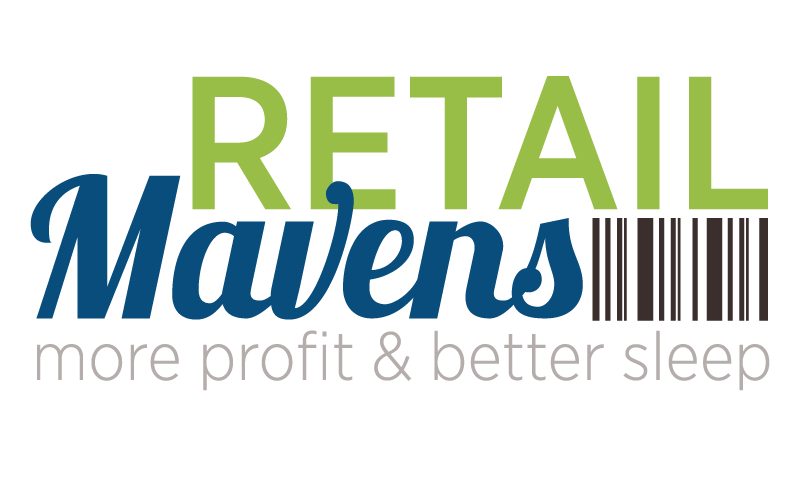What do you get when you cross working harder than you’ve ever worked, a store that even with all your diligence has trended down four years running, and a bank that calls in the entirety of your large business loan – an amount that will force you into bankruptcy? Give up? Shawntá Ray and Rick Harmon of Happy Up were ready to do just that.
Shawntá worked for the previous owner of the St. Louis toy chain for ten years, and when she and her husband bought the business she continued under a bad business model that she didn’t know to question. “I was young, and [the previous owner] was very well-respected. What did I know?” The stores were operating with bloated inventory (some stock over ten years old!), they never put anything on sale (ever!), and paid a quarter of a million dollars annually in leases on just three stores. When the internet and the recession finally caught up with the locally-loved stores, they scrambled to make changes – they worked hard, they moved, they reduced the number of employees, they did extensive community outreach, and trimmed all the fat they could find. But sales continued to slide, profits continued to fall, and they were left scratching their heads.
Even with the downturn, they were fully transparent with their bank, continuing to pay their SBA loan. They were blindsided when the bank called in the full note on a Friday afternoon, payable Monday. If they could come up with $30,000, they could “have a little more time” on the balance. When they announced their immediate closure on social media, the community reaction was seismic. In just three days (three days!) the community raised $82,450 with no strings attached to keep the beloved stores open.
If the first punch line was a punch in the gut, now imagine you’ve got those same circumstances plus more than eighty thousand reasons to keep going, provided by your community. No pressure or anything. Shawntá and Rick were still looking at ugly financials, too-high overhead, and so many changes that they didn’t know where to begin. Enter Cathy and RETAILMavens. Shawntá retained Cathy as a consultant when she realized she needed to make changes she couldn’t hope to even think of herself. A stellar salesperson, a merchandising queen, a community-builder extraordinaire, Shawntá discovered that as much as she excelled at the front-of-house, it was the back-of-house issues that would make-or-break her business. This business acumen could no longer be “a thing we sort of understand or sort of hope to do right or guess on doing well.”
Cathy helped them learn to negotiate their leases, freeing up cash that could be invested in the business instead of to non-negotiated, inflated real estate. They hit inventory hard, learning the right way to put on a sale and how to stock so nothing sits. When Shawntá took over the stores, she didn’t turn her inventory even once per year, now it’s turning four or more times every year, and the products are fresh and tailored to what the customers are buying. Cathy has also been integral in organizing Happy Up’s financials so that they make sense. “The bank likes us having Cathy!” says Shawntá (You remember the bank, right? The ones that were requesting full payment on the SBA loan? Those guys. No longer menacing.) Not only are the books clear, they’re easy for Shawntá to manage herself, giving her the kind of financial control over her business that she needs to move forward with purpose and fulfill not only her personal aspirations, but those of the community that valued these stores enough to refuse to allow them to go under. Each year with Cathy’s help, they’ve tackled a different list of larger issues along with the day-to-day struggles of retail ownership.
Cathy’s objective view of the big picture and creative and incisive help managing the small issues have helped Happy Up go from just days away from permanent closure to two stores that are thriving – up every single month since their turnaround – with numbers that you have to see to believe. They’ve taken their store from failing to blowing away industry averages for even highly profitable toy stores (regular industry averages cower in fear at Happy Up’s numbers!). Not only are they turning their entire stock almost four times a year, they’ve reduced their cost of goods sold while upping their gross margin return on investment. The average COGS for a toy story is 52.4 – a highly profitable toy store averages 50.9. Happy Up? Happily at 48.1! The average toy store has a GMROI of 47.6, while a highly profitable toy store averages 49.1. Happy Up blows them away at 51.9.
What does this mean in English for those of us without degrees in finance who haven’t (yet) brought RETAILMavens on board?
Happy Up is managing their inventory so efficiently that it’s costing them less and making them more money. Every single day. It’s not magic. It’s science. It’s no longer ignoring your numbers.
It’s working smarter instead of harder, and turning failure into success beyond their wildest dreams.


